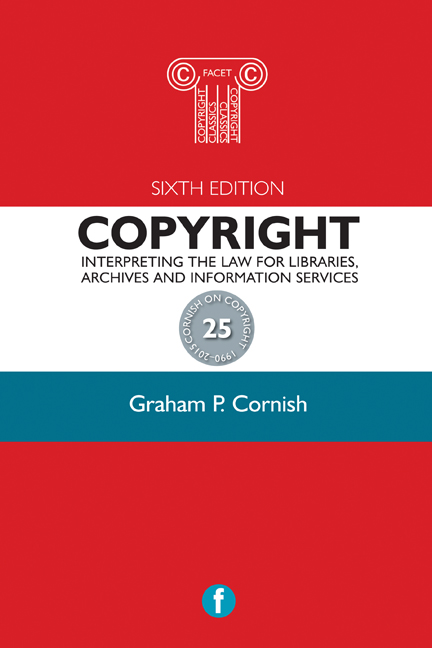Book contents
- Frontmatter
- Contents
- Author's note
- Acknowledgements
- List of abbreviations
- Introduction
- Section 1 Definition and law
- Section 2 What is covered by copyright
- Section 3 Rights and limitations
- Section 4 Literary, dramatic and musical works
- Section 5 Artistic works
- Section 6 Sound recordings and performers’ rights
- Section 7 Films and videos
- Section 8 Broadcasts
- Section 9 Databases
- Section 10 Licensing schemes and licences
- Section 11 Computer programs, the electronic world and websites
- Section 12 Other matters
- Useful addresses and contacts
- Useful sources of information
- Appendix: suggested declaration forms
- Index
Section 7 - Films and videos
Published online by Cambridge University Press: 08 June 2018
- Frontmatter
- Contents
- Author's note
- Acknowledgements
- List of abbreviations
- Introduction
- Section 1 Definition and law
- Section 2 What is covered by copyright
- Section 3 Rights and limitations
- Section 4 Literary, dramatic and musical works
- Section 5 Artistic works
- Section 6 Sound recordings and performers’ rights
- Section 7 Films and videos
- Section 8 Broadcasts
- Section 9 Databases
- Section 10 Licensing schemes and licences
- Section 11 Computer programs, the electronic world and websites
- Section 12 Other matters
- Useful addresses and contacts
- Useful sources of information
- Appendix: suggested declaration forms
- Index
Summary
Definition
What is the definition of a film?
The definition of a film includes anything from which a moving image can by any means be produced. This covers film of all kinds, video, DVD and any other new technologies which produce moving images. Presumably it would also cover devices such as ‘What the butler saw’ too! Despite its name, a microfilm is not a film but a photograph!
Note that until July 1957 (when the 1956 Act came into force) films were protected only as a series of photographs.
Authorship
Who is the author of a film?
The producer and the principal director. It is presumed that all films have both producers and principal directors and therefore all films are treated as having joint authorship, unless these two functions are performed by the same person. This applies only to films made on or after 1 July 1994. Before that date the author is defined simply as ‘the person responsible for making the arrangements necessary for making the film’.
Do the authors of films enjoy moral rights?
Yes, the producer and principal director both enjoy moral rights in the same way as authors of literary works. See Section 3.
Ownership of copyright
Who owns the copyright in a film?
See Section 3 on ownership for more detailed information. Ownership of many rights in a film depend on the contracts between the various people who made the film. Remember that the film has many copyright elements.
Example: A filmed interview with a song-writer contains several performances of the song-writer's songs and an extract of a film containing performance of some of these songs. The song-writer may own the copyright in his or her words in the interview and the words and music of the songs; the person making the TV programme owns the copyright in the programme as a whole and the film maker owns some elements at least of the copyright in the extract of the film included in the programme. However, if the film is made by a private person then that person owns the copyright in the film. See also Section 3.19 for unpublished materials bequeathed to archives and libraries.
- Type
- Chapter
- Information
- CopyrightInterpreting the law for Libraries, Archives and Information Services, pp. 121 - 130Publisher: FacetPrint publication year: 2015



